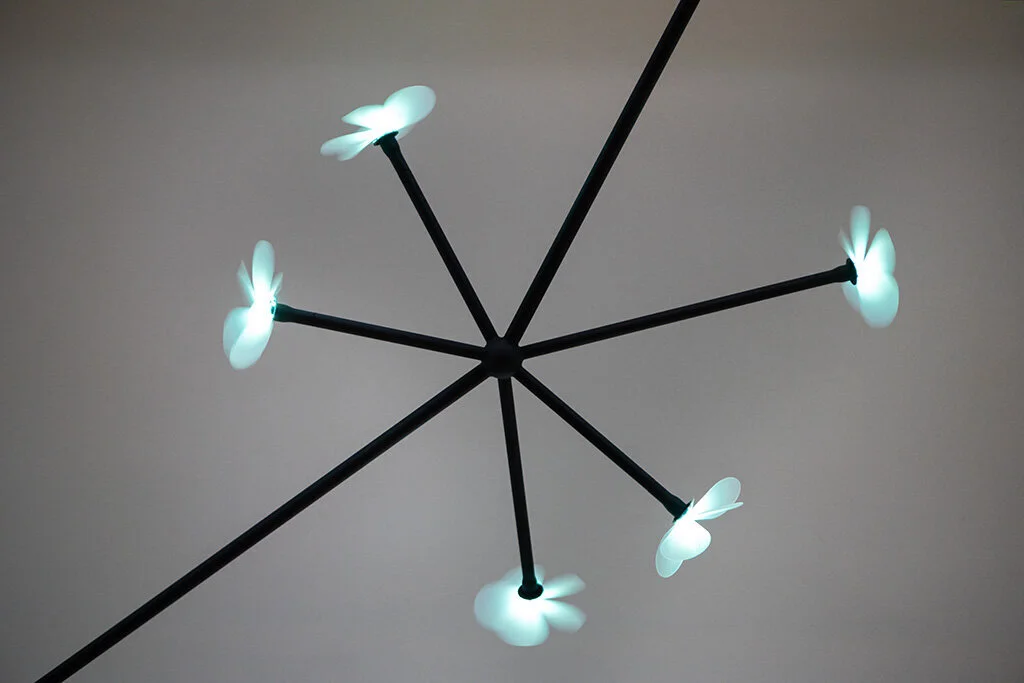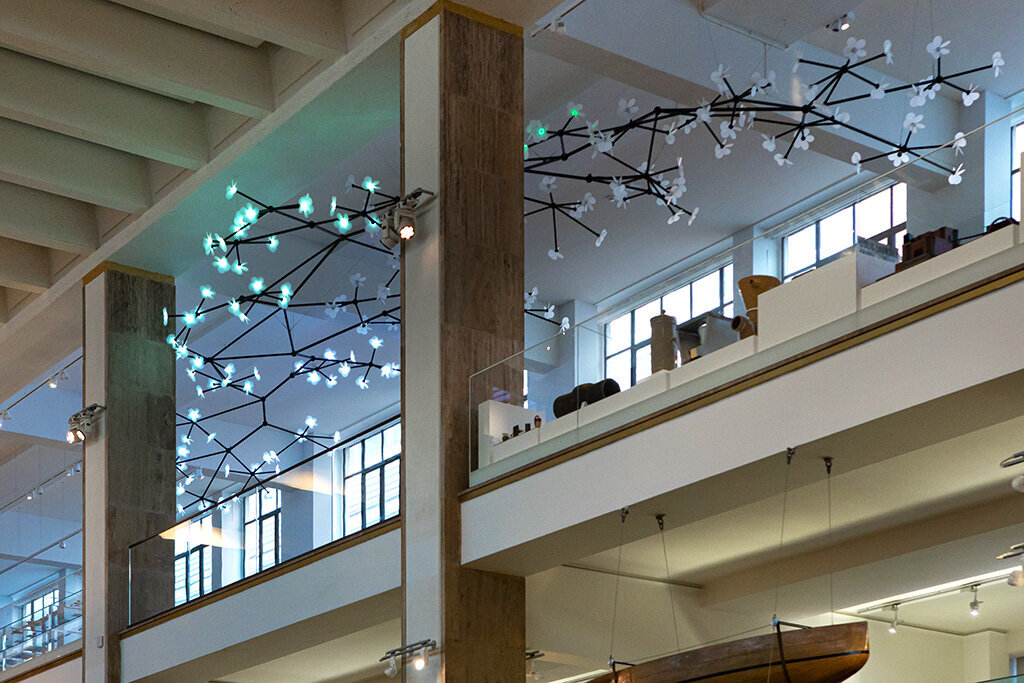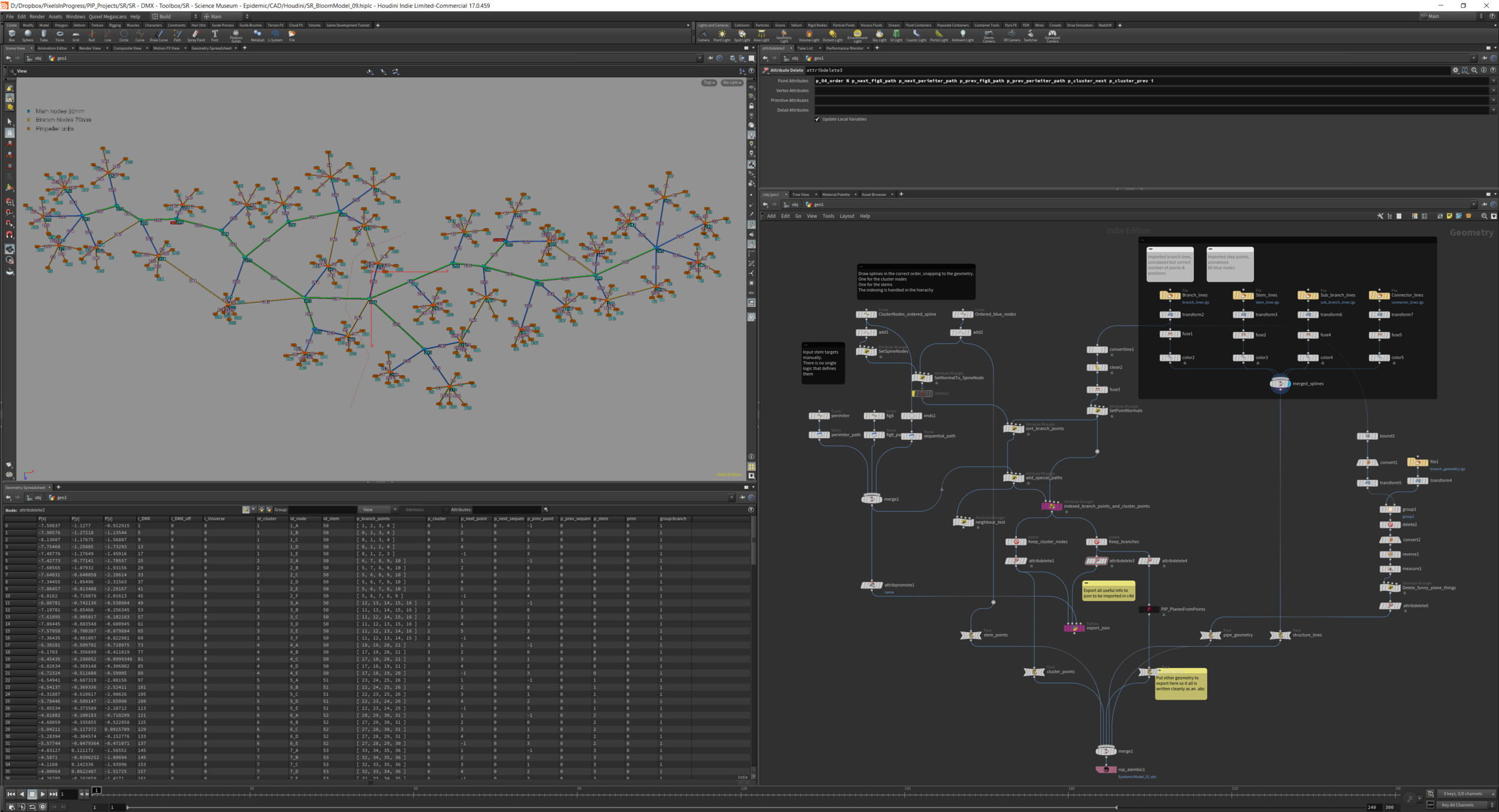Pixels in progress
------------------// DESIGN // VISUALISATION // ANIMATION // CODE //----------------
BLOOM - A Studio ROSO project. Medicine gallery - Science Museum London. 2019:
From the Studio ROSO website:
Bloom plays on the notion of air being the carrier and the 'active’ part in an epidemic system.
Like a sneeze that transmits a virus through the air.
The piece is created as a three-dimensional decentralized diagram. Painted black as if drawn directly in the space. it is a powder-coated mild steel structure, embellished with LED's, polypropylene propellers and motors at the extremities. Over a set period of time a number of different contagion scenarios will play out. animating the piece by rotating and lighting the propellers as the disease spreads throughout the structure.
Bloom can be interpreted on macro level. i.e. nodes being cities and the activation of propeller and light alluding to the fast spread of disease caused by the speed and reach of modern transport networks from one country or city to the next Or on micro level, with each propeller representing a single individual and the entire piece animating one propeller at a time by proximity.
"If you blow on a propeller. it will start spinning and. in turn. create its own airflow.
It's this playful analogy that we use to tell the serious story of how disease spreads, which can be caused by as simple a thing as breathing air
We cannot see it. but it travels far and fast”
My role in this project involved content design & development and the system to facilitate the animated elements & control.
Image & video courtesy of Studio ROSO by Sandra Ciampone
Technical overview:
Houdini & C4D combined workflow with bespoke tools for intercommunication between the two systems and the hardware.
Houdini:
Parametric model creating:
Layout & positions of the objects.
Indexing & data parameters needed for animation (neighbours & sequences etc)
Addressing info for distributing lighting/brightness & propeller speed Artnet / DMX data to hardware.
Custom export parameters as JSON for importing per point array attributes in C4D.
Alembic export of position & orientation data for dynamic C4D model.
C4D
Lightweight matrix cloned object system with single procedural Python Effector to simulate animated content:
Custom JSON importer for reading in all of the array data calculated in Houdini.
Parameters such as infection rate, proximity, duration, clustering and reinfection ability.
Animation data generated for light colour & motor speed.
Custom python plugin built to:
Visualise propellers in the viewport to see speed & colour/brightness.
Calculate the Artnet/DMX data for sending to the hardware.
Send the motor / lighting data to the fixtures for prototyping and development on site.
Take system used for building the animation sequences. A custom python script creates a new document sequencing all of the takes into the timeline ready to export as a single animation.
Houdini workflow
C4D Control interface
This video shows the C4D animation interface used to build the sequences for the installation.
System control





